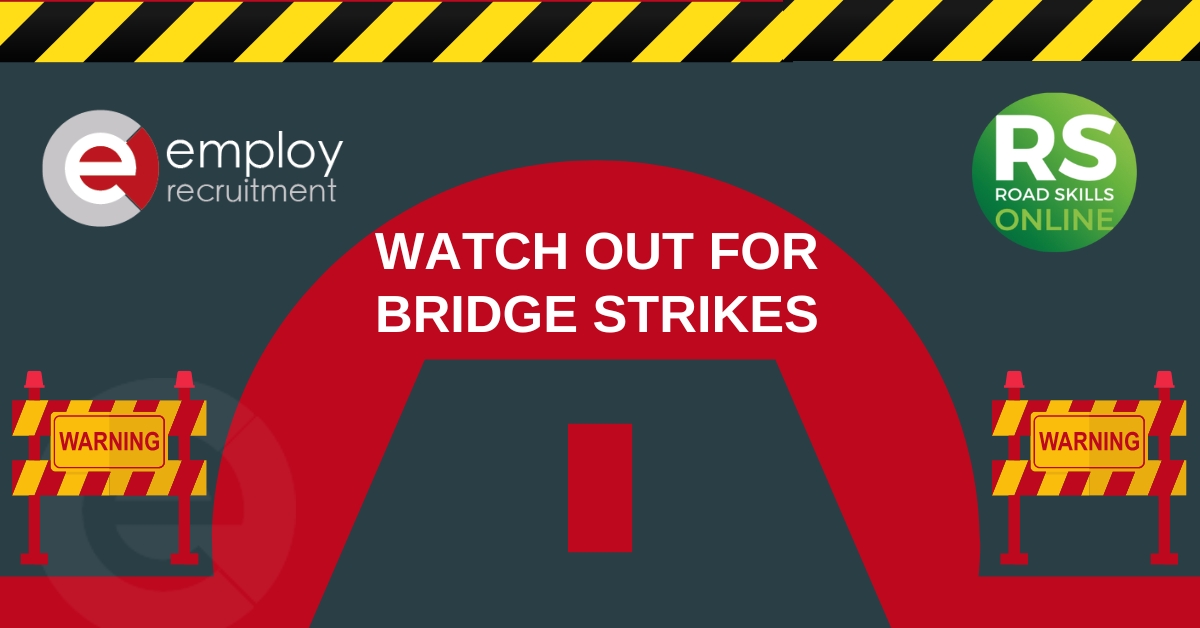Bridge Strikes: Preventing Incidents as Autumn Approaches for HGV Drivers
At Employ Recruitment, the safety and compliance of our HGV drivers are at the core of everything we do. As we enter the autumn season, it’s crucial to be mindful of the risks that come with changing driving conditions. One of the most serious incidents that HGV drivers can face, which often sees a spike in autumn and winter months, is bridge strikes.
In the UK, bridge strikes remain a significant problem there are on average 5 bridge strikes a day. These incidents not only endanger drivers and the public but can also result in costly damage to infrastructure, disrupt road and rail networks, and lead to hefty fines and penalties including the possible loss of your HGV entitlement. To help ensure our drivers remain safe and compliant, we offer a comprehensive Toolbox Talk Module on Bridge Strikes, now available as part of Year 3 of the PDP (Professional Development Plan).
Essential Tips to Prevent Bridge Strikes
Here are some key tips to help our drivers stay safe and prevent bridge strikes, particularly as we move into autumn:
1. Know Your Vehicle Height
• Always Know Your Exact Height: Before starting any journey, make sure you know the exact height of your vehicle, including any additional cargo or trailer modifications this is a legal requirement. Never assume your vehicle height from memory, double-check.
• Display Your Vehicle’s Height Clearly: UK law requires drivers of vehicles over 3 metres high, from ground level, to have the exact height of the vehicle displayed clearly in the cabin in-cab height indicator. Ensure this information is visible at all times.
2. Route Planning and Awareness
• Plan Your Route in Advance: Avoid routes with low bridges by using journey-planning tools and sat-nav systems designed for HGVs. General-purpose sat-navs may not account for bridge height restrictions, so make sure you use one specifically tailored to commercial vehicles, as this will require your vehicle dimensions to be inputted.
• Use Approved Routes: Whenever possible, stick to approved routes that are suitable for HGVs. Local councils often provide information on safe routes for larger vehicles, particularly in urban areas. Be mindful of any diversions caused by road works etc. You might need to re-enter the route on your sat nav when it is safe to do so.
3. Watch for Bridge Height Signs
• Keep an Eye on Signage: Always be on the lookout for height restriction signs, especially in rural areas or near railway bridges. Approach bridges with caution especially when the bridge clearance height is close to your overall traveling height, there may have been a recent change to the road surface.
• Obey Height Restriction Signs: If a sign indicates that your vehicle will not clear the bridge, stop and take an alternative route. Never take risks when it comes to bridge heights, even if it means adjusting your route last minute.
4. Be Extra Vigilant in Poor Conditions
• Weather Awareness: Heavy rain, mist, or fog can obscure signs or create glare, making it difficult to see height restrictions. Take extra care in these conditions, slowing down to give yourself more time to react to signs.
• Fatigue Management: Make sure you’re taking regular breaks, especially when driving longer distances or during nighttime hours. A well-rested driver is much more likely to spot crucial signage and avoid potential strikes.
5. Stay Up to Date with Training
• Access the Toolbox Talk on Bridge Strikes: As part of Year 3 of the PDP, Employ Recruitment offers a detailed Toolbox Talk module specifically covering bridge strikes. This talk is designed to help drivers fully understand the risks and learn strategies to avoid bridge strike incidents.
• Professional Development: Staying informed is one of the best ways to stay safe. We encourage all our drivers to regularly review their training materials, particularly modules like this one that address common seasonal risks.
Together, we can work to reduce the number of bridge strikes and keep our roads—and our drivers—safe this autumn.
Please find below the QR code to the latest information from Network Rail regarding bridge strikes.



